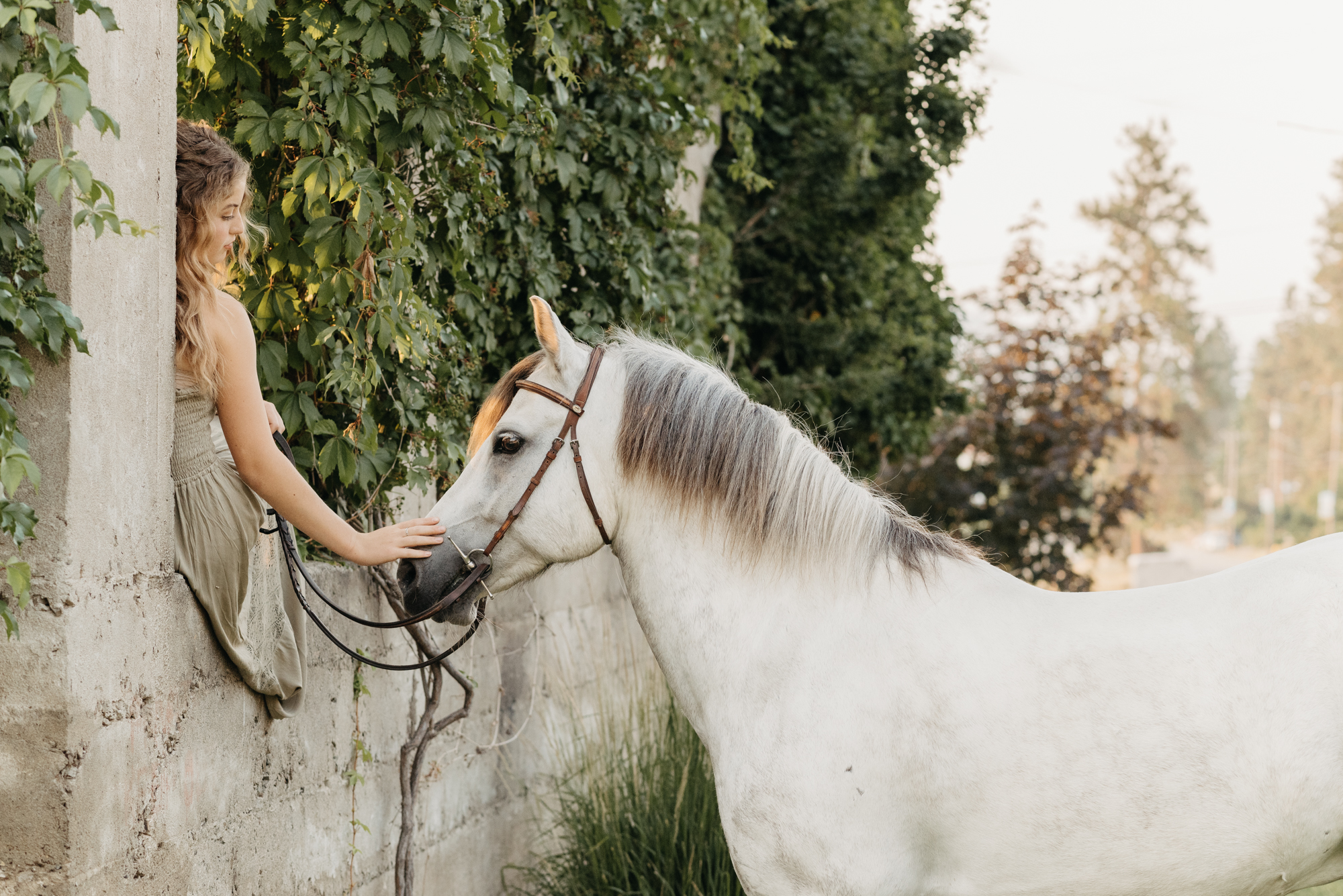I had the privilege of interviewing Rachel Gedaliya- an amazing barefoot trimmer in Okanagan. Her approach to the horse’s hoof takes the whole body, movement & activity into mind. You will enjoy reading this interview and learning more about what she does!
How long have you been involved with horses?
“I discovered horses in my early 20’s. From the first riding lesson I took I was hooked for a lifelong journey with the horses, following their guidance over a few continents. I had the opportunity to watch horses in different areas in the world and have a wider understanding of their needs in order to have great functioning hooves.”
When did you become a farrier?
“I am a barefoot trimmer (there is a difference in the practice and education standards). I started my trimming journey at 2012 and was certified at 2014. I have been a member of the Canadian Equine Hoof Care Association since it started in 2021.”
What training/ certificates have you received?
“I went to the only natural performance hoof care school that was available at the time in Canada- Success with Horses- and graduated from their 2 year apprenticeship program. Since then I am constantly broadening my education and learning as much as I can as there is new research on the hooves that comes up and guides us to better our trims with great mentors from around the world.”
Do you have any preferences of shoes that you use for different disciplines?
“I don’t believe in applying metal to horse’s hooves. The hooves are a live organ that need to move, shift, feel the ground, absorb shock and communicate with the earth. By applying a material that isn’t yielding to the forces from above (the horse) and the ground force we compromise the function of the hoof to flex, its integrity as well as the ability to feel and grip the ground, and absorb shock.
When there is a need to protect the hoof, I suggest using hoof boots which have rubber soles that cover the whole bottom of the hoof or a glue on rubber shoe application.”
What makes your approach stand out?
“I use a whole horse approach. I practice equine body work as well as trimming and have an understanding how the whole body affects the hooves, and vice versa. When we see the whole horse, and work WITH them, we see results that are faster and last longer.”
Is there a common hoof problem you’ve been seeing lately?
“Hooves are the most adaptable organ the horse has to the environment. In the winter they will be with more moisture, in the summer- drier. When horses have a balanced diet and lots of movement we will see healthy hooves that can progressively develop more soft tissue and strengthen the cadual part of the hoof and maintain soundness.
When I am called to see a pathology case, there have already been a few factors that are creating a failure of the integrity of the hoof (from unbalanced nutrition to lack of proper understanding of the biomechanics of the hoof and the whole horse, to environmental factors and more). It is hard to pinpoint just one factor as they can be entwined together.”
What areas do you provide service to?
“I travel between Oliver to Salmon arm, and since I live in Kelowna, that is my main area of focus.”
As a farrier, what advice would you give readers regarding their horse’s hoof care?
“Horses are designed and meant to MOVE!!! Always think how I can create more movement for my horse in the hours we don’t ride/drive them. After movement is balanced nutrition. Know what’s in your hay (and not ‘just’ the carbohydrates levels) so you can make an educated decision on which minerals your horse’s need.
Educate yourself about what healthy hooves should look like and have an open discussion with your hoof care provider on what are the long and short term goals for bringing more health to the hooves and the horse.”
How often do you recommend getting horse’s feet trimmed/ reshod?
“The hoof grows on average about 1 cm’ each month. With movement on different terrain, they should be able to wear it to proper function. Each horse is individual in their growth rate as well as their wear patterns (really depends on what terrain they are moving on), but as a baseline every 4 to 5 weeks will be ideal.”
Are you taking on more clients?
“My trimming slots are full at the moment but I have open spots for body work and private trim lessons for owners who are empowered to trim their own horses.”
How can we get in contact with you if we’d like to use your services or find out more?
“Via phone 403-963-2465 / email rachged@gmail.com or on FB R.G Equine Body Works“
